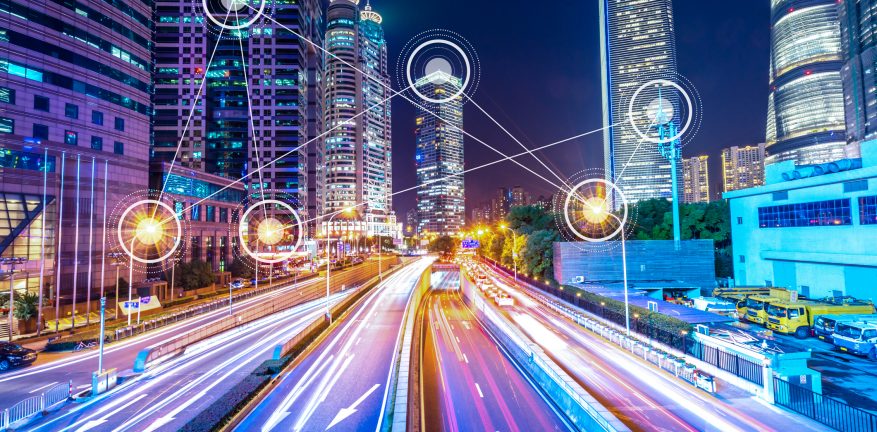IWCE 2022: Edge computing is the backbone of future smart cities
At this modern apex of human innovation, sometimes it feels like the digital evolution has emerged at the precipice of a new era: artificial intelligence is in the preliminary stages of mass deployment throughout many sectors; smart devices connect people and things like never before; technological advancements are plowing ahead at an unprecedented rate.
Edge computing, a burgeoning field that puts digital internet infrastructure that’s traditionally been housed in regional hubs directly into increasingly smart devices, is becoming more of a societal norm—serving as the backbone of 21st century developments including smart cities.
“Everything happens on edge,” said Sanjeet Pandit, global head of smart cities at Qualcomm during a keynote address at the 2022 International Wireless Communications Expo (IWCE) in Las Vegas. The expo started Monday and will continue through Thursday.
“Smart cities have been talked about for years—years and years,” he said. It’s been talked about so much that the term has become a catchphrase of sorts that doesn’t fully capture what’s really going on. But beyond the hype, the smart cities initiative is a concrete movement focused on ”harnessing the power of digitization,” he said. “You don’t want to deploy technology for the sake of deploying technology.”
And at the core of this digitization is edge computing.
“From a drone, to a robot, to a police vehicle, even wearables—the amount of computing that’s being built into devices” is impressive, said Rob High, IBM Fellow and vice president, chief tech officer of IBM’s Network and Edge Computing. “As a general rule, the closer you bring the computer to the person, (the closer) you’re bringing the task to be performed.”
When combined with artificial intelligence, the capacity for automation has been expanded tenfold.
“Artificial intelligence (AI) with IoT (internet of things); that’s the future,” Pandit said, “That’s what’s going to take the industry forward.”
As an example, High described a real-world process in a manufacturing center, where an automated infrared camera monitors factory line welding. Traditionally, welds need to be inspected in person, which could mean taking apart recently constructed products to ensure their soundness.
The automated camera conversely tracks the welds as they happen and alerts the welder if it’s not strong enough.
The camera filters the steady stream of video data “to examine whether the welds are being performed correctly at the time the welds are being done,” High said. “The advantage is we don’t have to do a destructive test, we can do it in real time.”
Broadly, edge computing allows digitization of “an otherwise analogue world,” High said. And because real-time data is necessary for AI to operate in a ‘wild’ setting, “Without edge computing, we can’t get the lower latencies we need to make decisions.”
From a macro perspective, the edge computing industry is expected to explode in coming years; there’s already 1.8 billion cores in industrial, smart cities and connected vehicles. High predicted 21.5 billion devices will be connected by 2025. At least in part, High attributed this boom in devices to the pandemic, which caused many organizations to suddenly reconsider everyday interactions like ordering a coffee or going to the grocery store.
“It’s actually accelerated the transformation of process that we considered relatively analogue in nature—process we’ve developed to protect people from each other has gotten people to consider how to automate processes,” he said.
But while it’s expected to expand, there are sticking points the industry must overcome. Two notable hurdles noted by Pandit are the fragmentation of devices and the lack of a unified vision. To meet this challenge, it’s necessary for “a solid consortium to go in there and respond; you cannot solve this by yourself,” he said.




















